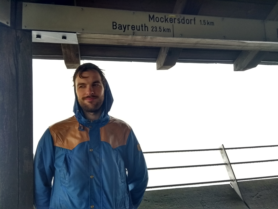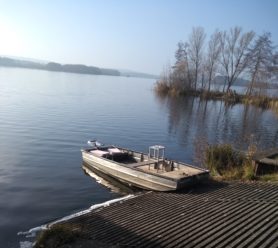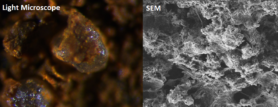Karel As
 Hello everyone, My name is Karel As and I was born and raised in the Netherlands. To be precise in a city called Leeuwarden in the north of the country. Here water is everywhere and people from all over the country come to this region to do sailing, wind-surfing and swimming. In the past we also had a big ice-skating competition that went all around the province but this hasn`t happened for the last 23 years because of climate change. As you can tell water (frozen and liquid) is happily used for leisure and its management is crucial. In P-TRAP we will help to create a better quality of water a goal I am fully engaged in.
Hello everyone, My name is Karel As and I was born and raised in the Netherlands. To be precise in a city called Leeuwarden in the north of the country. Here water is everywhere and people from all over the country come to this region to do sailing, wind-surfing and swimming. In the past we also had a big ice-skating competition that went all around the province but this hasn`t happened for the last 23 years because of climate change. As you can tell water (frozen and liquid) is happily used for leisure and its management is crucial. In P-TRAP we will help to create a better quality of water a goal I am fully engaged in.
I have done a Bachelor and Master degree at TU Delft in Life Sciences and Technology. After this, I started the Master study Earth, Life and Climate at Utrecht University. During this time I did an internship in Rennes, France at IRSTEA (Institut national de recherche en sciences et technologies pour l’environnement et l’agriculture). Here we worked on the recycling of phosphate from sewage sludge. We found that organic material might play an important role in binding phosphate, making phosphate recovery difficult at times. Thilo Behrends of Utrecht University, who was my secondary supervisor for this project, encouraged me to apply for P-TRAP, which fits perfectly to my background and interests. I´m excited that it worked out and that I´m now at the University of Bayreuth have the chance to work on fixation of phosphorus in lake sediments.

Fig. 2: Boat used for sampling with the Brombachsee in the background
The University of Bayreuth is located in the south of Germany, an area relatively lacking in surface waters. To prevent water shortages in the future the water authority created reservoirs. This was done by by submerging a valley with water from the Danube. These reservoirs exist for 50 years now but up to now this reservoir function of these lakes has not been used much. Still, in the future with climate change this function could prove to become increasingly important. Therefore it is essential that the water quality meets the standard for its use. Algae blooms caused by excess phosphate can hamper this function by production of cytotoxins. Also recreation will become dangerous when toxin levels are too high.In a collaboration with ESR 11, water authority Arnsberg and the P-TRAP consortium we will investigate means by which we could fixate phosphates to prevent algae blooms from happening in the future. As a primary source we will look at iron-coated sand (Fig. 3).

Fig. 3: Iron coated sand under light-microscope and scanning electron microscope
These materials come from water purification plants where they are used in sand-filters. These filters help to remove a variety of contaminants to create drinking water. After ten years or so the sands are spent and are considered a waste product. Iron-coated sands however have a high affinity for phosphate and could be used as such to prevent phosphorus release from the sediment. Furthermore, sands could help in the stabilization of sediments prone to resuspension. In this way iron-coated sands can help to decrease phosphorus release in two different ways.
I am very excited to work on this project in collaboration with so many partners and in such a complex system. It will be challenging but I hope we can make a good contribution to the resilience of the European lake systems.

